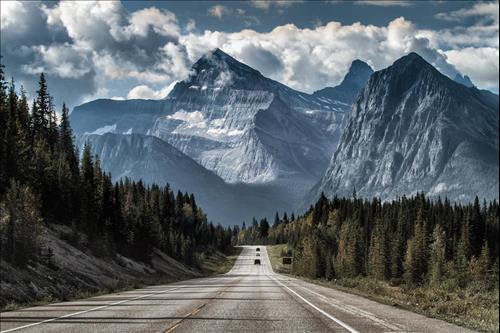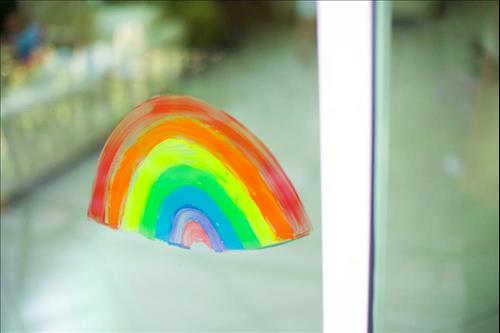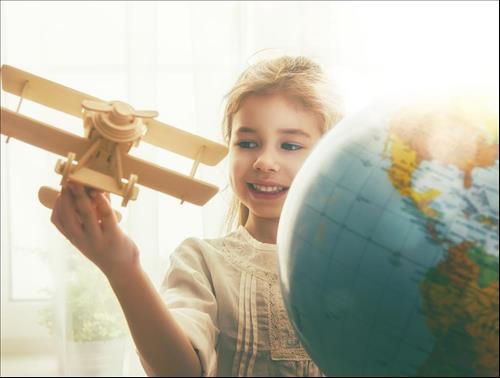
Homeschooling during coronavirus: five ways to teach children about climate change
(MENAFN- The Conversation) Schools around the world have closed in reponse to the COVID-19 pandemic, so many families are finding themselves thrust into homeschooling. Parents are figuring out how to teach their children subjects like mathematics and grammar, while also juggling other commitments, all within the cramped spaces of self-isolation.
Climate change is an interdisciplinary subject that both school children and adults think is important. And as we deal with the current crisis – which is also having its own effects on the environment – there is perhaps no better time to think about how to avoid the next, potentially even greater one.
Despite this, a recent survey found that 75% of teachers don't feel they have adequate training to educate students about climate change, so homeschooling parents might feel even more out of their depth. But the emerging field of climate change education offers a few key lessons on how to teach learners of all ages.
1. Talk about itAccording to climate scientist Katharine Hayhoe, the most important thing you can do to fight climate change is talk about it . As public awareness of climate change has grown – thanks in part to Greta Thunberg and the school climate strikes – many children will have picked up some information from the news and in the classroom, and so a good place to start is by listening to what they already know and think, and hear their questions and concerns. You don't have to be an expert to talk about this issue, and learn with your children. But by not talking about climate change, especially the powerful emotions it can provoke, misinformation and eco-anxiety may take root.

Discuss the wider world outside. Shutterstock 2. Use age-appropriate materials
Back in 1996, environmental educator David Sobel coined the term ecophobia to describe the fear and powerlessness of young children when faced with abstract, distant environmental problems such as the destruction of the Amazon rainforest. When teaching about climate change, don't scare your children or share information that might overwhelm them. For example, a documentary that starkly presents the destructive power of climate change in terms of flooding and wildfires probably isn't a good thing to share with someone in primary school.
Read more: How to discover the wildlife wonders of your own garden
There are excellent educational resources that incorporate both childhood development and the formal curriculum for different aged learners. As with any information online, always be sure that you are using reliable sources, such as government agencies , academic institutions , and trusted educational charities . You don't want to inadvertently spread misinformation.
3. Focus on hope (but not optimism)Swedish researcher Maria Ojala has extensively studied the role of hope in climate change education. Parents naturally want to make sure their kids stay hopeful about the future, even when faced with serious threats such as climate change or a global pandemic.
Read more: To prepare climate strikers for the future, we need to rewrite the history books
But Ojala makes an important distinction between optimism – an uncritical, passive certainty that everything will be alright – and constructive hope, in which we all work together to shape a better future. Constructive hope is an invitation to learners to re-imagine the future and rise to the challenge of our time .
The empowering lens of constructive hope allows us to move beyond climate science and engage with both mitigation – the actions we can take individually and collectively to decrease global heating – and adaptation – the creation of more resilient communities and societies in the face of a changing world.
4. Good climate education is good educationA recent systematic review found that climate change education was most effective when it focused on personally relevant and meaningful information and used active and engaging teaching methods. In other words, climate change education works when it employs the strategies of good education, regardless of the subject.

Looking is learning. Shutterstock
This research also identified a few themes specific to climate education: engage in deliberative discussions, interact with scientists, address misconceptions, and implement community projects. So, when learning at home, you can listen to podcasts of scientists , debunk climate myths , and get your hands dirty with a project in your home or garden.
5. Look outsideOne of the most important things you can do as a parent is go outside with your children – as long as the current COVID-19 guidance in your country allows it. Explore any patches of nature you can access, even if that's in your garden , and if you are stuck inside, observe the signs of spring and listen to the birdsong outside your window.
Read more: Climate change: young people striking from school see it for the life-threatening issue it is
Ecologists are concerned that the 'extinction of experience' of a younger generation with little direct contact with nature will only exacerbate the twin crises of climate change and biodiversity loss. The antidote to eco-anxiety is spending time in nature, which has mental health benefits for children and teenagers.
Research has found that parents play an important role in helping children cope with climate change and shift from victims to change agents . If you are homeschooling because of coronavirus, you probably have your hands full getting through the day. But engaging positively with the subject of climate change, especially through the lens of constructive hope, is a way for you to teach science, geography, and many other subjects , while shaping a more just, sustainable world after COVID-19.

Legal Disclaimer:
MENAFN provides the
information “as is” without warranty of any kind. We do not accept
any responsibility or liability for the accuracy, content, images,
videos, licenses, completeness, legality, or reliability of the information
contained in this article. If you have any complaints or copyright
issues related to this article, kindly contact the provider above.

















Comments
No comment